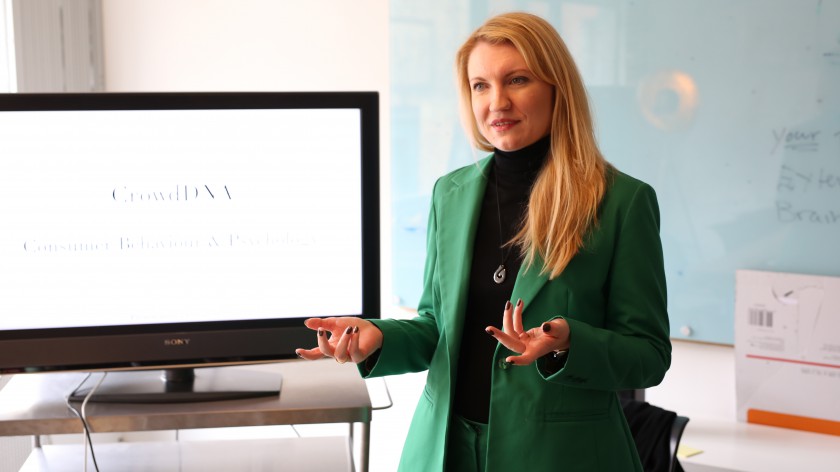We were joined by Kate Nightingale, consumer psychologist, lecturer, founder of Style Psychology and part of CrowdStars, our own network of thinkers, influencers, creators and culture-shapers...
Kate Nightingale works with fashion retailers, property developers, luxury brands and restaurant owners to develop engaging and meaningful brand experiences. Last week she popped into Crowd HQ in London to help us gain a deeper understanding of our subconscious minds and challenged our thinking on sensorial design one sense at the time.
What is an experience anyway? Experiences aren’t just things we do because brands want us to act in certain ways. Experiences are the sum of our actions and the feelings that they trigger. Experiences can last for years or be over in a second, leave long lasting emotions, or just be a fleeting feeling of pleasure, like the sun touching your skin. An experience is all the moments in between the times we interact with brands, everything that evokes and leaves an impression in our daily lives.

We’re humans not consumers. By focusing on people as holistic beings, brands can create more meaningful interactions, which take into account people’s actual behaviours. As humans, we rely on our subconscious mind to process data and make millions of micro decisions every single minute. We are influenced by: evolutionary factors, cultural, social and individualistic influences. Brands often pay a lot of attention to people’s individualistic preferences, but forget the evolutionary influences determined by the subconscious mind.
There’s a sixth sense. Key to tapping into human decision making is harnessing the senses. We have an innate preference for round shapes since when we were infants. And we make more impulse purchases (like ordering another Negroni at the bar) in dim lighting. A sense that we often forget is bodily sensation. Soft seating gives an impression of a friendly and approachable brand and rough surfaces makes us feel more empathetic towards others.
Safety first and then appeal to pleasure. You can create a feeling of safety by inviting consumers to give a big teddy bear a hug. That’s what the owners of Loaf Sofa did to encourage their customers to make the big decision to pay for a high ticket item in their store. Once the basic needs of safety have been met, brands can focus on creating a pleasurable atmosphere. A simple trick: research shows that single aroma smells in stores increases sales by 32% and shorten people’s decision making by 40 seconds.
Kate finished off her talk by encouraging us, as cultural insights specialists and strategists, to encourage the brands we work with to pay closer attention to the subconscious and sensorial aspects of their spaces both on and offline.
